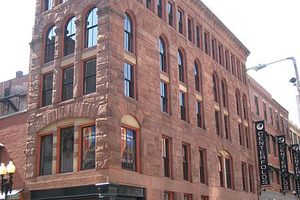About
Near the intersection of Beach Street and the John F. Fitzgerald Surface Road in Boston stands the Chinatown Gate, a traditional paifang gateway that marks the official entrance to the city’s Asian-American neighborhood.
A small block of marble in the plaza outside the gateway memorializes what’s known in China as the June Fourth Incident, but more commonly referred to in the west as the Tiananmen Square Massacre.
In April 1989, a student-led protest began in Beijing’s Tiananmen Square demanding free speech and democratic elections, as well as an end to government corruption. Soon, others joined the students and the protests spanned days, then weeks, then months. At its zenith, an estimated one million people took part in the Tiananmen demonstrations. Similar protests sprang up in cities across China.
Then, on June 4th, the People’s Republic military rolled into Tiananmen Square to crush the protests. The death toll was estimated to be in the thousands, with many wounded.
The Boston memorial, which is inscribed with both English and Chinese texts, reads:
"This park is dedicated in honor of the democracy movement in China and in memory of those who died in the struggle for freedom in Tiananmen Square in June 1989
Raymond L. Flynn, Mayor September 10, 1989
City of Boston"
The Chinatown Gate Plaza lies between two parks, Auntie Kay and Uncle Frank Chin Park to the north and Mary Soo Hoo Park to the south. Located about half a mile from the site of the 1770 Boston Massacre, both parks are comfortable places to reflect upon the cost of freedom.
Related Tags
Know Before You Go
If standing near the John F. Fitzgerald Surface Road looking west at the Chinatown Gate, the Tiananmen Memorial will be on your left by the entrance to Mary Soo Hoo Park.
Published
July 20, 2021






















